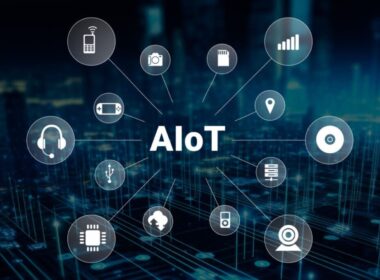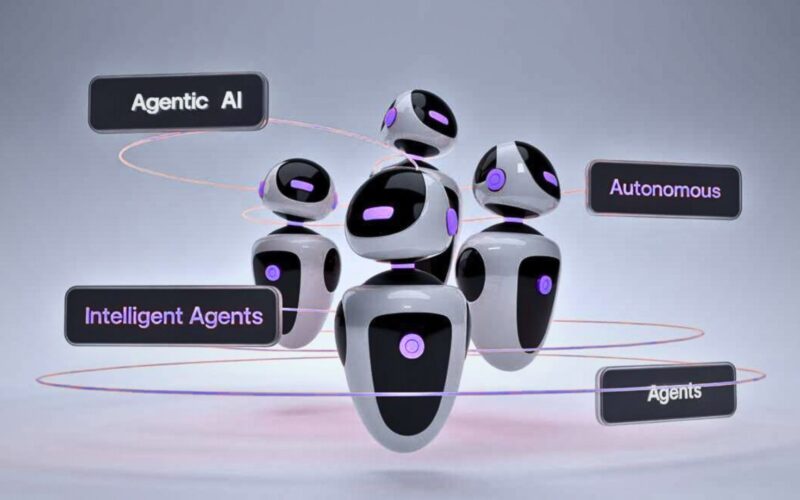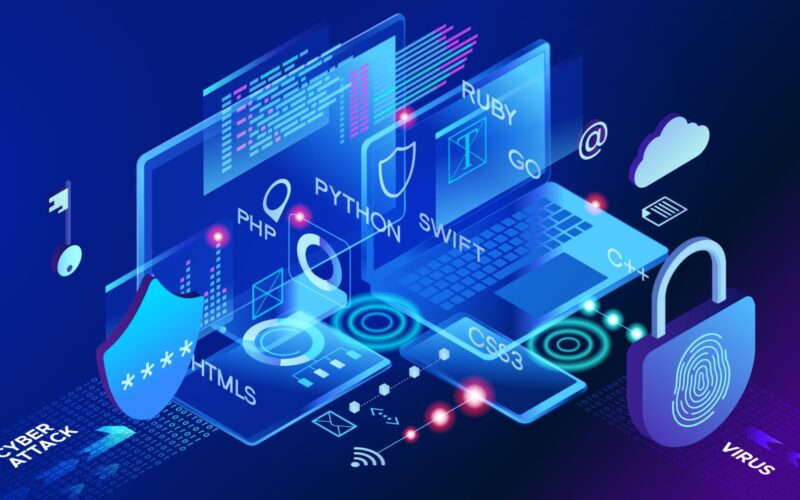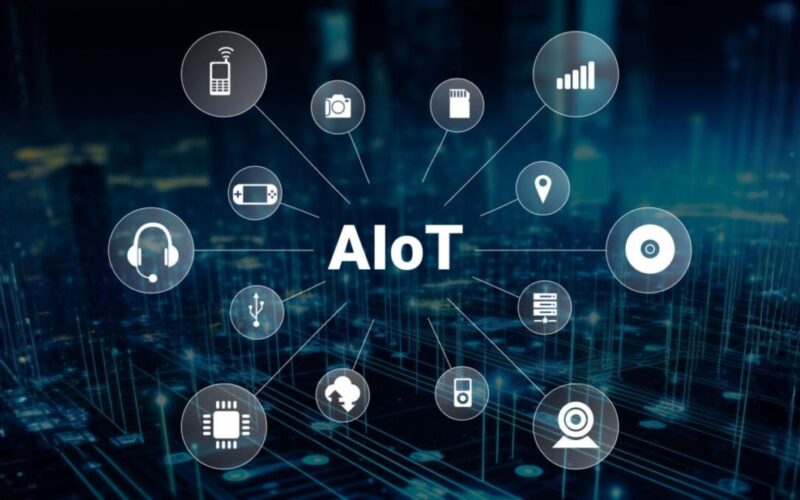Your chatbot might be driving customers away without you realizing it. Traditional chatbots operate like phone trees from the 1990s, just with a text interface instead of buttons. The data backs this up: 53% of people in a recent survey said they found chatbots annoying.
A big part of the issue is that older chatbots can only respond when users type specific words. When people ask questions in their own way, the chatbot often gets confused and forces them into awkward, limited conversations.
Agentic AI chatbots break this pattern entirely. They analyze intent, reason through problems, and adjust their responses in real time.
This article examines how agentic AI chatbots differ from traditional systems, why they matter for your busin
ess operations, and what you need to consider before implementing them. We’ll look at the technology itself, the measurable benefits companies are seeing, and the practical challenges of making the transition.
Key Takeaways
- Agentic AI chatbots make independent decisions based on context and goals, while traditional chatbots simply follow preset rules and scripts requiring constant manual updates.
- Businesses handling frequent customer inquiries usually see stronger financial outcomes because agentic AI manages repetitive questions independently. The level of return varies by sector, inquiry volume, and existing workflows.
- Agentic AI will independently resolve 80% of routine customer service inquiries by 2029, creating competitive pressure for businesses still using traditional automation or fully staffed teams.
- Successful deployments start with mapping workflows, selecting one high-volume use case, running parallel systems for 4-6 weeks, and establishing continuous feedback loops rather than automating everything immediately.
How Agentic AI Chatbots Work
Agentic AI chatbots work through a combination of large language models and reasoning frameworks. They process incoming messages to understand intent rather than matching keywords.
The system then evaluates multiple possible responses against its defined goals. It considers context from the current conversation and previous interactions. Based on this analysis, it selects the best action and executes it autonomously.
When faced with uncertainty, these chatbots can break complex requests into smaller steps, gather additional information, or escalate strategically. The technology continuously refines its approach based on outcomes, creating a feedback loop that improves performance over time.
Application of Agentic AI Across Various Industries
Agentic AI is moving well beyond basic customer service. Companies in multiple sectors are adopting it to improve decision-making, automate routine work, and deliver faster support. The examples below show how different industries are already applying this technology to everyday operations.
| Industry | How Agentic AI Is Being Used |
|---|---|
| Fintech | Supports account queries, detects unusual transactions, assists with loan pre-screening, and guides customers through financial tasks with real-time reasoning. |
| Education | Provides personalized learning support, answers administrative questions, helps with course selection, and assists instructors with grading or content-related inquiries. |
| Healthcare | Handles appointment coordination, symptom triage, billing questions, and patient follow-ups while escalating sensitive cases to medical staff. |
| Agriculture | Offers guidance on crop conditions, irrigation planning, equipment troubleshooting, and early detection of anomalies based on field data. |
| Energy | Assists with outage reporting, monitors usage patterns, answers billing questions, and supports field technicians with step-by-step instructions. |
| Transportation | Manages booking issues, tracks shipments, resolves travel queries, and helps operations teams anticipate delays based on real-time data. |
| Retail | Supports product recommendations, handles returns and order changes, manages inventory queries, and provides instant store or delivery updates. |
At Codewave, we build agentic AI platforms that understand context, reason through complex tasks, and integrate smoothly with your existing systems. Our solutions support high-volume operations, multi-step workflows, and customer experiences that require consistency at scale.
If you want to see how this applies to your sector, explore all the industries we serve.
Also Read: AI Software Tools and Use Cases in 2025
Agentic AI vs Non-Agentic AI Chatbots: Key Differences
The distinction between agentic and non-agentic AI chatbots comes down to autonomy. Non-agentic chatbots follow predetermined rules and scripts. They wait for specific inputs and deliver matching outputs.
Custom agentic AI chatbots operate with independence. They set goals, evaluate options, and choose actions without constant human oversight. This difference affects every aspect of how these systems perform in real business scenarios.
| Aspect | Non-Agentic AI Chatbots | Agentic AI Chatbots |
|---|---|---|
| Decision Making | Follows preset rules and decision trees | Makes independent decisions based on context and goals |
| Learning Capability | Limited to programmed responses; requires manual updates | Learns from interactions and adapts behavior over time |
| Problem Solving | Can only address scenarios it was explicitly programmed for | Reasons through new situations and develops solutions |
| Conversation Flow | Linear, scripted paths that restart when confused | Dynamic conversations that adjust based on user intent |
| Error Handling | Transfers to a human agent or provides a generic error message | Attempts alternative approaches and asks clarifying questions |
| Task Complexity | Handles simple, repetitive queries with clear keywords | Manages multi-step processes requiring judgment calls |
| Context Awareness | Forgets previous exchanges unless specifically programmed | Maintains context across the entire conversation and past interactions |
| Scalability | Requires new programming for each new use case | Extends to new scenarios using existing reasoning capabilities |
| Implementation Time | Weeks to months mapping every possible conversation path | Faster deployment with goal-based training rather than script writing |
| Maintenance | Constant updates needed as business processes change | Self-adjusts to minor changes; major updates less frequent |
| User Experience | Frustrating when the user deviates from the expected script | Feels natural even when conversations take unexpected turns |
| Cost Structure | Lower initial cost but higher ongoing maintenance expenses | Higher upfront investment with lower long-term operational costs |
When to Choose Agentic AI Chatbots vs Traditional AI Chatbots
Deciding between agentic AI chatbots and traditional AI chatbots comes down to the complexity of your customer interactions and your business goals. Here’s a straightforward breakdown to help you determine which solution best fits your needs.
Choose Traditional AI Chatbots When:
- Handling Simple, Repetitive Queries: If your customer service involves answering frequently asked questions (FAQs), traditional chatbots can efficiently handle these with minimal complexity.
- Low-Level Customization Needed: If your business requires limited personalization, traditional chatbots that follow predetermined scripts are cost-effective and straightforward to implement.
- Operational Simplicity: For companies with lower budgets or those seeking a quick, low-cost solution, traditional chatbots are an accessible entry point.
Choose Agentic AI Chatbots When:
- Complex Customer Interactions: When your customer queries are multifaceted or require nuanced decision-making, agentic AI chatbots are the better choice due to their ability to analyze context and reason through complex problems.
- Personalized Customer Service: If your goal is to provide a more tailored customer experience, agentic AI can adapt its responses based on previous interactions, preferences, and emotional cues.
- Handling Multiple Channels: If your business operates across various touchpoints (chat, email, social media), agentic AI chatbots maintain continuity and context across all platforms without forcing customers to repeat themselves.
At Codewave, we help businesses build agentic AI chatbots that truly understand and respond to customer needs. By using technologies like Node.js and React, we create solutions that make interactions more efficient, personalized, and meaningful for your customers.
Let’s talk about how we can help you integrate these smart chatbots into your business. Book a 15-minute free strategy session with us today, and let’s explore how this technology can improve your customer experience.
How to Integrate Agentic AI Chatbots into Your Existing Workflow: A Step-by-Step Guide
Implementing agentic AI chatbots requires strategic planning rather than simple plug-and-play installation. Most successful deployments follow a phased approach that minimizes disruption while building organizational confidence in the technology.
Start by mapping your current customer service workflows completely. Document every interaction type, decision point, and escalation trigger your team handles.
This baseline reveals where autonomous AI adds the most value and where human judgment remains essential. The mapping also identifies your knowledge sources, from product documentation to policy guides, which the AI will need to access.
Identify Integration Points with Your Tech Stack
Your agentic AI chatbot needs connections to existing systems to function effectively. Map out integrations with your CRM for customer history, order management systems for transaction data, knowledge bases for product information, and ticketing systems for escalations.
For example, a financial services company might connect its chatbot to account databases, transaction processors, and fraud detection systems. An e-commerce business would prioritize inventory management, shipping APIs, and payment gateways. Define these requirements before vendor selection to ensure compatibility.
Select Your Deployment Scope and Success Metrics
Resist the urge to automate everything immediately. Choose one high-volume, moderately complex use case for initial deployment.
This might be product troubleshooting, order modifications, or account inquiries. Define clear success metrics: resolution rate, customer satisfaction scores, average handling time, and escalation frequency.
A SaaS company might start with password resets and account access issues, measuring success by first-contact resolution rates above 85% and customer satisfaction above 4.2 out of 5.
Configure Goal-Based Training Rather Than Script Writing
Unlike traditional chatbots, agentic AI learns from objectives rather than predetermined conversation flows. Define what a successful resolution looks like for each interaction type. Provide the system with your business policies, product information, and sample conversations showing desired outcomes.
A telecom provider would train their chatbot on goals like “resolve billing disputes within company policy guidelines” rather than scripting every possible billing scenario. Include edge cases and examples of when to escalate versus when to proceed autonomously.
Implement Parallel Running with Human Oversight
Run your agentic AI alongside existing support channels initially. Let it handle interactions while human agents monitor decisions and outcomes in real time.
This parallel phase typically lasts 4-6 weeks and serves two purposes: it builds your team’s confidence in the system’s judgment, and it generates data for refinement.
During this period, agents can intervene before the AI takes irreversible actions. A healthcare provider might have the chatbot draft appointment changes but require nurse approval before confirming, gradually reducing oversight as accuracy improves.
Establish Continuous Feedback Loops
Create mechanisms for ongoing improvement after launch. Track which interactions the AI handles well and where it struggles. Collect customer feedback immediately after chatbot interactions.
Review escalated cases weekly to identify patterns requiring additional training. An insurance company might discover its chatbot handles standard claims perfectly but struggles with multi-vehicle accidents, prompting targeted training on complex scenarios.
Build regular review sessions into your operations calendar rather than treating deployment as a one-time project.
ROI and Cost of Implementation
Agentic AI chatbots usually involve an upfront investment that varies by platform, use case, and integration depth. The numbers below are hypothetical and meant to give you a directional view, not exact projections.
The payoff typically shows up in three areas: direct cost savings, revenue protection, and productivity gains.
Take a mid-sized company that might handle around 10,000 support tickets a month at roughly $8 per interaction. That adds up to about $960,000 a year. If an agentic AI system resolves even 70 percent of those inquiries on its own, the estimated savings land near $672,000 annually, along with a jump in response times from hours to seconds.
Add in the likely drop in churn from faster resolutions and the extra bandwidth your human team gains to handle complex issues, and most firms could see positive ROI somewhere in the 12–18-month range. The main variable here is the interaction volume.
Organizations with fewer than roughly 5,000 monthly customer contacts may find the payback slower. Those with more than 20,000 interactions a month often reach break-even in under a year based on these sample estimates.
Challenges and Considerations of Implementation
Implementing agentic AI chatbots is an exciting prospect for businesses, but it comes with its own set of challenges. Understanding these hurdles upfront can help you make informed decisions as you move toward automation. Here’s what you need to consider before diving into the implementation:
1. Data Quality and Integration
- Challenge: For agentic AI chatbots to work effectively, they rely on high-quality, clean data. Poor or inconsistent data can result in inaccurate responses, leading to customer frustration.
- Consideration: Ensure that your existing data infrastructure is robust enough to support AI. The chatbot needs access to up-to-date information from CRM systems, knowledge bases, and historical customer interactions.
2. Training and Continuous Improvement
- Challenge: Unlike traditional chatbots, agentic AI systems need to be trained continuously to handle new types of queries and improve decision-making over time. Without proper training, the system may not deliver accurate or relevant responses.
- Consideration: Factor in the time and resources required to regularly train the AI. This includes providing the system with new data, real-time feedback, and ongoing tuning to ensure it evolves alongside customer needs.
3. Customer Expectations
- Challenge: Customers are becoming more accustomed to fast and efficient support, but they may have high expectations when interacting with an AI. If the chatbot doesn’t meet these expectations, it can lead to dissatisfaction.
- Consideration: Make sure that the chatbot can handle complex queries and escalate issues to human agents when needed. Striking the right balance between automation and human interaction is key to customer satisfaction.
4. Cost of Implementation
- Challenge: The initial setup costs for agentic AI chatbots can be higher than traditional chatbots. Businesses need to consider the upfront investment required to implement AI, including technology infrastructure, integration, and training.
- Consideration: Although the upfront cost may be significant, weigh it against the long-term benefits like reduced operational costs, improved customer satisfaction, and the potential for increased sales.
5. Change Management and Employee Buy-In
- Challenge: Introducing AI into customer service can disrupt existing workflows. Employees may feel uncertain about how AI will affect their roles, leading to resistance.
- Consideration: Engage employees early on by explaining the benefits of AI and how it will support, not replace, their work. Providing training and creating clear communication channels will ease the transition.
6. Compliance and Ethical Concerns
- Challenge: AI chatbots must operate within the boundaries of regulatory and compliance frameworks. Mismanagement of sensitive customer data can lead to legal and reputational risks.
- Consideration: Ensure your AI chatbot complies with data protection laws like GDPR and that it has appropriate safeguards in place to protect user data.
These challenges are not barriers, but important factors to address for successful AI chatbot implementation. By preparing for these issues, you’ll be better equipped to deploy a system that enhances both customer experience and operational efficiency.
Looking Ahead: The Future Evolution of Agentic AI and Its Impact on Industries
As businesses continue to explore the potential of agentic AI chatbots, the technology is poised to evolve rapidly. With advancements in natural language processing, machine learning, and automation, we can expect agentic AI to become even more sophisticated and deeply integrated into business operations. Here’s how agentic AI is expected to evolve and shape the future across various industries.
Smarter AI Models with Deeper Context Understanding
- Future Outlook: Agentic AI will continue to improve its ability to understand complex human emotions and intentions by leveraging more advanced natural language processing (NLP) models.These models will allow chatbots to better read between the lines, understand subtle cues, and provide more accurate, empathetic responses.
- Impact: As AI systems become smarter, businesses will see an increase in customer satisfaction and reduced frustration, as chatbots will be able to handle nuanced queries with greater ease.
Integration with Other Emerging Technologies
- Future Outlook: Agentic AI will become more integrated with other emerging technologies, such as Internet of Things (IoT), 5G, and blockchain, to create even more intelligent and automated solutions. This will allow chatbots to pull real-time data from a broader range of sources and make more informed decisions.
- Impact: Industries such as healthcare, retail, and manufacturing will benefit from faster and more accurate responses, as AI will have access to a wealth of real-time data, enabling it to predict customer needs before they arise.
Greater Personalization and Customization
- Future Outlook: As AI learns more from customer interactions, agentic chatbots will become even more personalized. They’ll be able to predict customer preferences and offer tailored recommendations in real time based on previous conversations, purchasing behavior, and even mood.
- Impact: Businesses will see improved engagement rates and customer loyalty, as more personalized experiences create stronger emotional connections between the brand and its customers.
Broader Use Cases and Cross-Industry Applications
- Future Outlook: The scope of agentic AI will expand across industries, from healthcare and finance to logistics and entertainment. Chatbots will handle everything from complex healthcare diagnostics to financial planning, providing services that once required human expertise.
- Impact: As industries adopt agentic AI for specialized tasks, businesses can expect to streamline operations, reduce human error, and offer a higher level of service with fewer resources.
Ethical and Regulatory Considerations
- Future Outlook: With the growing use of AI, there will be an increasing focus on ethical considerations, such as ensuring fairness, transparency, and accountability. Businesses will need to address these concerns as they develop and deploy AI systems.
- Impact: The focus on ethical AI will help build consumer trust and ensure that AI remains a positive force across industries. Companies that navigate these concerns effectively will gain a competitive advantage.
The future of agentic AI is promising, with advancements that will not only change the way businesses interact with customers but also rewire entire industries.
Conclusion
Agentic AI chatbots represent more than incremental improvement over existing automation. They fundamentally change what’s possible in customer interaction at scale. The technology has moved past the experimental stages into proven business applications, delivering measurable results.
Companies implementing these systems now gain operational advantages that compound over time, while those waiting face increasing competitive pressure from organizations already operating with autonomous customer service capabilities.
At Codewave, we’ve built agentic AI solutions across 15+ industries, from fintech platforms to healthcare providers and educational institutions.
Our approach combines state-of-the-art large language models with custom reasoning frameworks, vector databases for contextual memory, and smooth API integrations connecting your chatbot to existing CRM and operational systems.
We use design-thinking methodology to prototype rapidly, test with real users, and refine based on actual performance rather than assumptions.
We work alongside your team throughout implementation, ensuring your agentic AI understands your business logic, reflects your brand voice, and improves continuously as it handles more interactions.
The result is an autonomous system that delivers measurable ROI while freeing your team to focus on complex challenges that truly require human expertise.
If you’re ready to see how agentic AI chatbots can elevate your customer service, check out our portfolio to explore past projects.
FAQs
- What is an agentic AI chatbot?
An agentic AI chatbot is an autonomous system that understands intent, reasons through problems, and makes independent decisions without following preset scripts. It learns from interactions and adapts its approach based on context and goals.
- How much does an agentic AI chatbot cost?
Enterprise deployment typically costs $50,000-$500,000 initially, with annual maintenance running 15-25% of that investment. Companies handling 10,000+ monthly interactions usually see positive ROI within 12-18 months through reduced operational costs.
- What’s the difference between agentic and traditional AI chatbots?
Traditional chatbots follow predetermined rules and match keywords to scripted responses. Agentic AI chatbots operate independently, understanding context, making judgment calls, and handling complex multi-step processes without requiring programming for every scenario.
- When should a business choose agentic AI over traditional chatbots?
Choose agentic AI when customer queries require interpretation, multi-step resolution, personalization, or cross-channel continuity. Traditional chatbots work better for simple, repetitive queries with predictable patterns and single correct answers.
- How long does it take to implement an agentic AI chatbot?
Implementation follows a phased approach starting with workflow mapping, then 4-6 weeks of parallel running with human oversight before full deployment. Goal-based training allows faster deployment than traditional chatbots, requiring exhaustive script mapping.
Codewave is a UX first design thinking & digital transformation services company, designing & engineering innovative mobile apps, cloud, & edge solutions.







